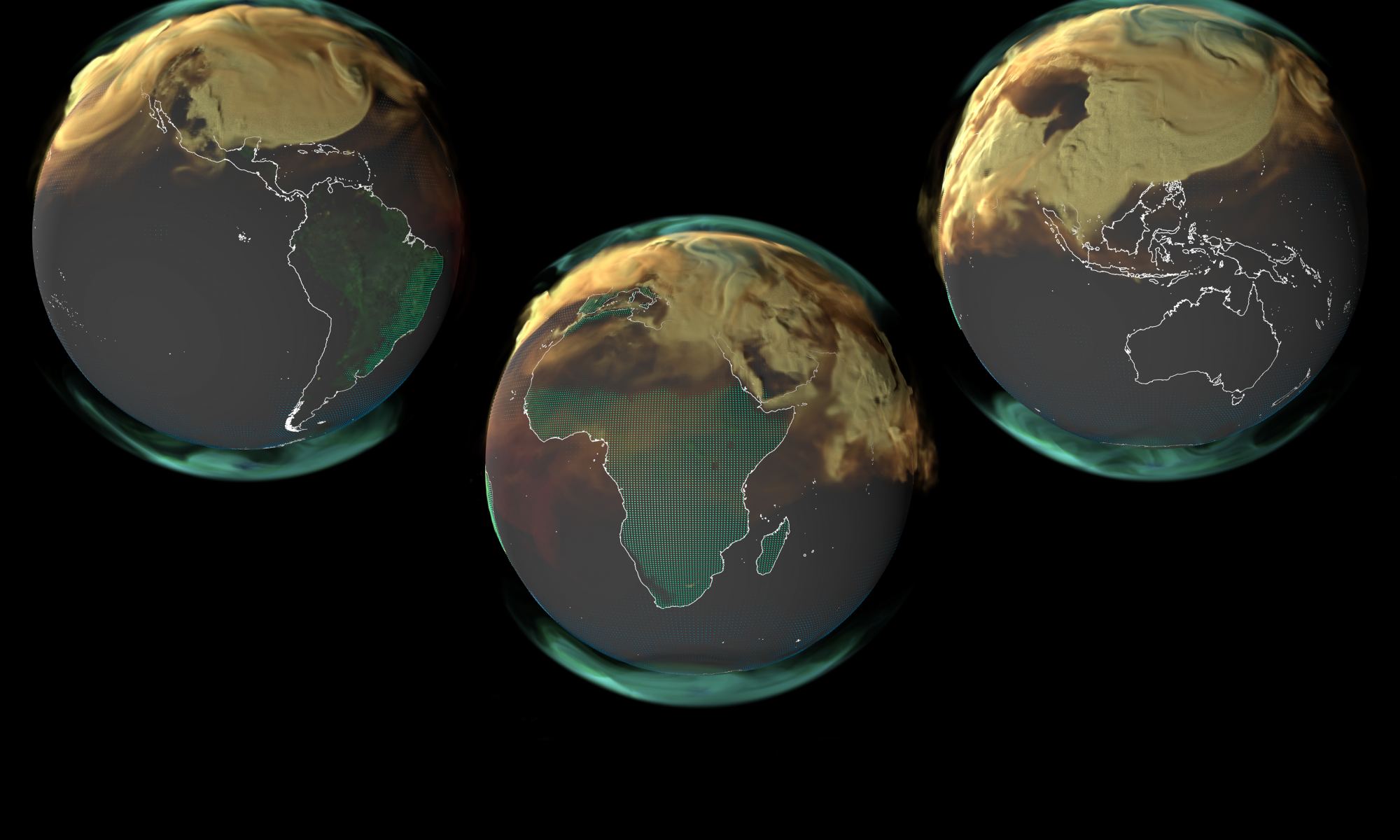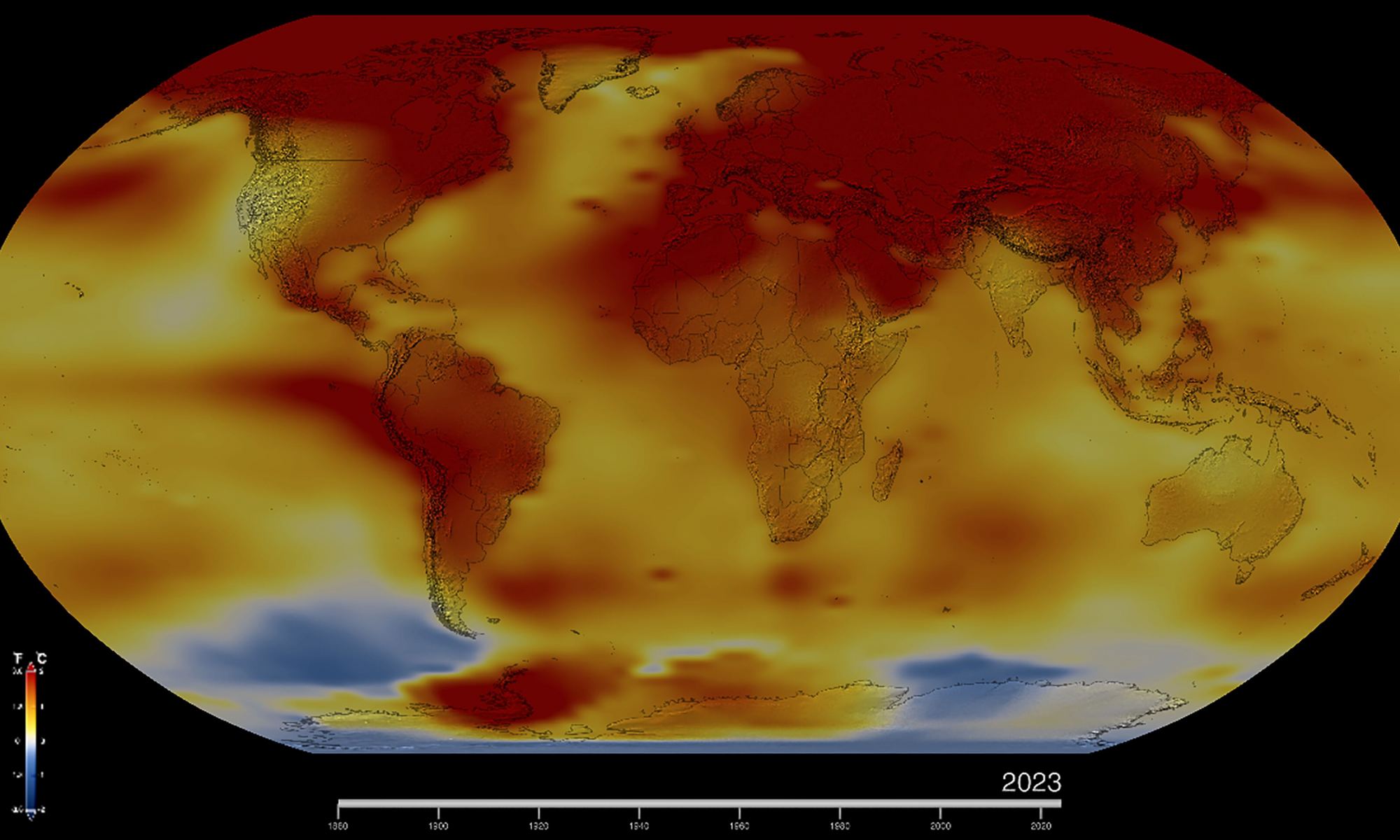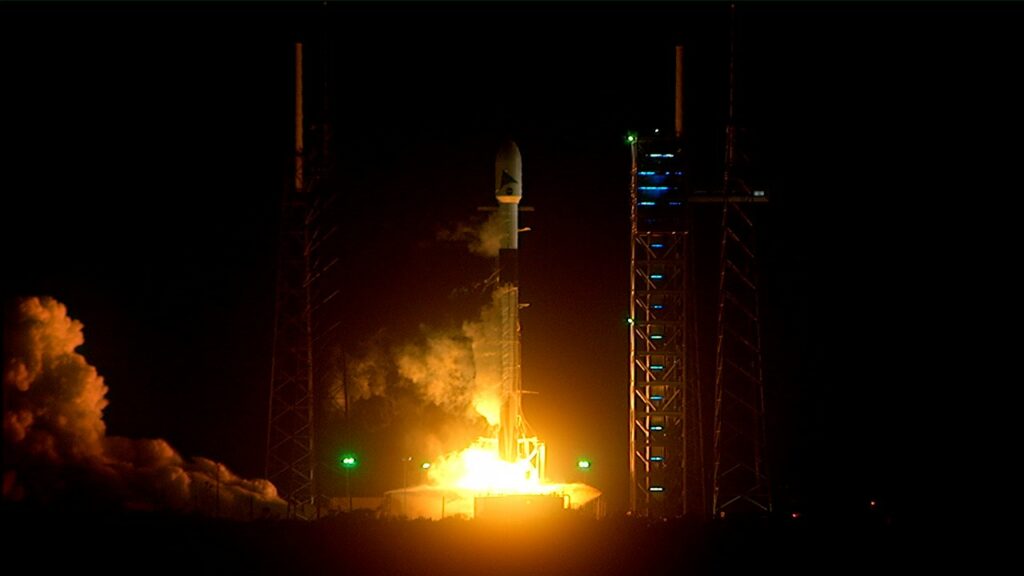Climate scientists must fear sounding like a broken record when discussing new record temperatures yearly. But once again, last year was the hottest one ever recorded, according to a new study by NASA scientists.
Continue reading “It’s Official, 2024 Was the Hottest Year on Record”Advanced Civilizations Will Overheat Their Planets Within 1,000 Years
Earth’s average global temperatures have been steadily increasing since the Industrial Revolution. According to the National Oceanic and Atmospheric Agency (NOAA), Earth has been heating up at a rate of 0.06 °C (0.11 °F) per decade since 1850 – or about 1.11 °C (2 °F) in total. Since 1982, the average annual increase has been 0.20 °C (0.36 °F) per decade, more than three times as fast. What’s more, this trend is projected to increase by between 1.5 and 2 °C (2.7 to 3.6 °F) by mid-century, possibly more! This is a direct consequence of burning fossil fuels, which has increased exponentially since the mid-19th century.
Depending on the extent of temperature increases, the impact on Earth’s habitability could be catastrophic. In a recent study, a team of scientists examined how temperature increases are a long-term issue facing advanced civilizations and not just a matter of fossil fuel consumption. As they argue, rising planetary temperatures could be an inevitable result of the exponential growth of energy consumption. Their findings could have serious implications for astrobiology and the Search for Extraterrestrial Intelligence (SETI).
Continue reading “Advanced Civilizations Will Overheat Their Planets Within 1,000 Years”Our Carbon Dioxide Emissions Have a Mesmerizing Side
Our CO2 emissions are warming the planet and making life uncomfortable and even unbearable in some regions. In July, the planet set consecutive records for the hottest day.
NASA is mapping our emissions, and while what they show us isn’t uplifting, it is visually appealing in a ghoulish way. Maybe the combination of visual appeal and ghoulishness will build momentum in the fight against climate change.
Continue reading “Our Carbon Dioxide Emissions Have a Mesmerizing Side”How Animal Movements Help Us Study the Planet

Scientists have been underutilizing a key resource we can use to help us understand Earth: animals. Our fellow Earthlings have a much different, and usually much more direct, relationship with the Earth. They move around the planet in ways and to places we don’t.
What can their movements tell us?
Continue reading “How Animal Movements Help Us Study the Planet”Satellite Measurements Show That Global Carbon Emissions are Still Rising

According to the Intergovernmental Panel on Climate Change (IPCC) Sixth Assessment Report (AR6), human activities have significantly impacted the planet. As global greenhouse gas emissions (mainly carbon dioxide) have continued to increase, so too have global temperatures – with severe ecological consequences. Between 2011 and 2020, global surface temperatures rose by an estimated 1.07 °C (2.01 °F) above the average in 1850–1900. At this rate, temperatures could further increase by 1.5 to 2 °C (2.7 to 3.6 °F) in the coming decades, depending on whether we can achieve net zero by 2050.
Unfortunately, the data for the past year is not encouraging. According to the 2023 Global Carbon Budget (GCB), an annual assessment of Earth’s carbon cycle, emissions in 2023 continued to rise by 1.1 percent compared to the previous year. This placed the total fossil fuel emissions from anthropogenic sources at 36.8 billion metric tons (over 40 US tons) of carbon dioxide, with an additional 4.1 billion metric tons (4.5 US tons) added by deforestation, extreme wildfires, and other sources. This trend indicates we are moving away from our goals and that things will get worse before they get better!
Continue reading “Satellite Measurements Show That Global Carbon Emissions are Still Rising”Can the Gaia Hypothesis Be Tested in the Lab?

During the 1970s, inventor/environmentalist James Lovelock and evolutionary biologist Lynn Margulis proposed the Gaia Hypothesis. This theory posits that Earth is a single, self-regulating system where the atmosphere, hydrosphere, all life, and their inorganic surroundings work together to maintain the conditions for life on the planet. This theory was largely inspired by Lovelock’s work with NASA during the 1960s, where the skilled inventor designed instruments for modeling the climate of Mars and other planets in the Solar System.
According to this theory, planets like Earth would slowly grow warmer and their oceans more acidic without a biosphere that regulates temperature and ensures climate stability. While the theory was readily accepted among environmentalists and climatologists, many in the scientific community have remained skeptical since it was proposed. Until now, it has been impossible to test this theory because it involves forces that work on a planetary scale. But in a recent paper, a team of Spanish scientists proposed an experimental system incorporating synthetic biology that could test the theory on a small scale.
Continue reading “Can the Gaia Hypothesis Be Tested in the Lab?”Passing Stars Changed the Orbits of Planets in the Solar System
The orbit of Earth around the Sun is always changing. It doesn’t change significantly from year to year, but over time the gravitational tugs of the Moon and other planets cause Earth’s orbit to vary. This migration affects Earth’s climate. For example, the gradual shift of Earth’s orbit and the changing tilt of Earth’s axis leads to the Milankovitch climate cycles. So if you want to understand paleoclimate or the shift of Earth’s climate across geologic time, it helps to know what Earth’s orbit was in the distant past.
Continue reading “Passing Stars Changed the Orbits of Planets in the Solar System”NASA Launches a New Mission to Study the Effects of Climate Change
NASA’s Plankton, Aerosol, Climate, ocean Ecosystem (PACE) satellite successfully launched and reached on Thursday, February 10th. The mission took off from Space Launch Complex 40 at Cape Canaveral Space Force Station in Florida, at 1:33 am EST 10:33 pm (PST) atop a SpaceX Falcon 9 rocket. About five minutes after launch, NASA confirmed that ground stations on Earth had acquired a signal from the satellite and were receiving data on its operational status and capabilities post-launch. For the next three years, the mission will monitor Earth’s ocean and atmosphere and study the effects of climate change.
Continue reading “NASA Launches a New Mission to Study the Effects of Climate Change”NASA Confirms that 2023 was the Hottest Year on Record

After analyzing the temperature data from 2023, NASA has concluded that it was the hottest year on record. This will surprise almost nobody. If you live in one of the regions stricken by drought, forest fires, or unusually powerful weather, you don’t need NASA to confirm that the planet is warming.
Continue reading “NASA Confirms that 2023 was the Hottest Year on Record”It Doesn't Take Much to Get a Runaway Greenhouse Effect
During the 1960s, the first robotic explorers began making flybys of Venus, including the Soviet Venera 1 and the Mariner 2 probes. These missions dispelled the popular myth that Venus was shrouded by dense rain clouds and had a tropical environment. Instead, these and subsequent missions revealed an extremely dense atmosphere predominantly composed of carbon dioxide. The few Venera landers that made it to the surface also confirmed that Venus is the hottest planet in the Solar System, with average temperatures of 464 °C (867 °F).
These findings drew attention to anthropogenic climate change and the possibility that something similar could happen on Earth. In a recent study, a team of astronomers from the University of Geneva (UNIGE) created the world’s first simulation of the entire greenhouse process that can turn a temperate planet suitable for Life into a hellish, hostile one. Their findings revealed that on Earth, a global average temperature rise of just a few tens of degrees (coupled with a slight rise in the Sun’s luminosity) would be sufficient to initiate this phenomenon and render our planet uninhabitable.
Continue reading “It Doesn't Take Much to Get a Runaway Greenhouse Effect”





